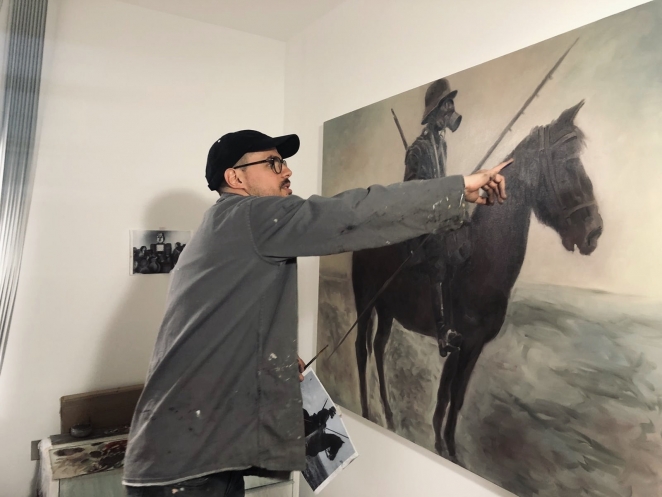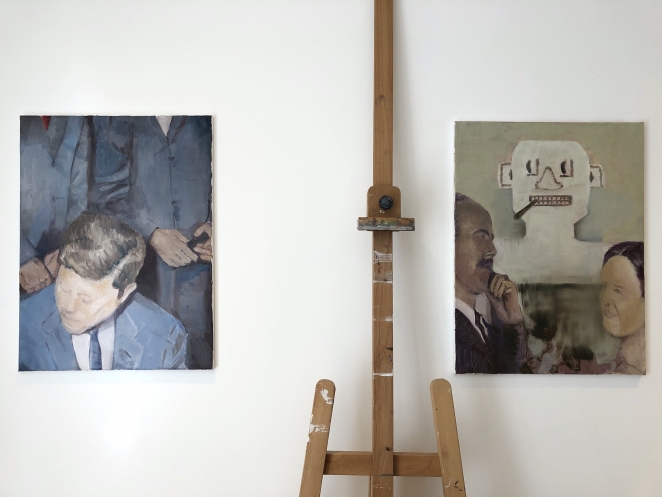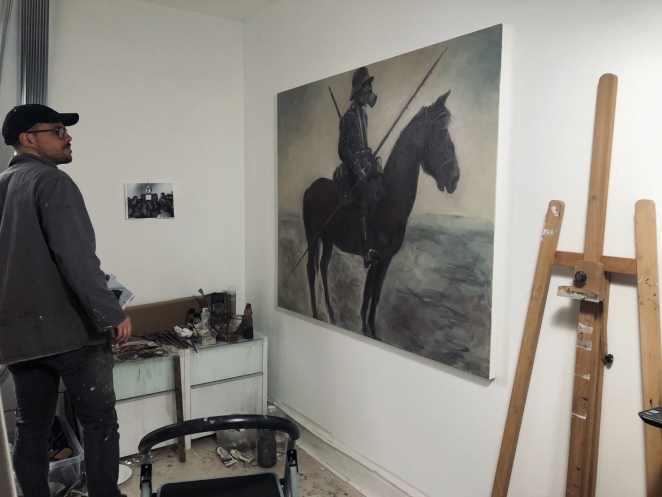Inevitably, you have to try your hand at different things before you find your true vocation.
It was the case of artist Adrian Penu, who spent some time with photography, film and various crafts before landing in fine art and painting. Since then, his creative process involves thorough research, just as much as looking at reality through the lenses of emotion and narrative. Adrian's love for art is pure – so much that he despises any form of elitism in the industry, and hopes to see it disappear.
For this Member Spotlight we are getting to know a passionate artist and painter, someone constantly observing the world looking for the next picture to paint.

How did you get into the industry?
I’m fairly new to the art industry, still part of the ‘emerging artist’ pool, which I think makes up more than 70% of artists currently working. Initially I didn’t think about being part of anything, I was just trying to find a medium in which I could communicate how I perceive the world around me. I tried photography, film and finally I found myself dabbling with acrylic paint.
At that stage I had no idea how or what to paint. It’s a tough medium.
Where are you based now and who do you work for?
I live and work in South East London which used to be an industrial area and shipping district due to its proximity to River Thames. Now it’s culturally more mixed but you can still find remanences of post WW2 era. I use to have a studio in what once was the industrial district of South London but after it went through the “artist colony” phase now it’s being remade for the commercial and business sectors.

Can you explain your creative process?
For me the creative process starts and ends in the mind, in the way the artist perceives and visualizes an idea. The creativity/artistry is the vision, not the execution.
Painting in oil can be learnt, but reinterpreting the meaning of things in terms of the opacity and translucency of an object, getting an emotional response from that, it is something you have to be blessed with.
I find an image that corresponds with an idea or concept and I try to interpret it in different ways. If I consider this material sufficient then I move on and materialize it in a painting or drawing. Most of the time the image for the artwork comes from film or photography.
How has technology affected the way you work (if at all)?
I work after images found on social media or the internet, stills from documentaries, movies which I then edit using filters. I use these technologies as tools to manipulate the image, to see how far I can expand its narrative.
We are constantly stimulated visually and that changes how we perceive nuances, hues and contrasts. Painting has to adapt to this sensorial alteration. There are many artists using traditional techniques but the compositions and subjects are unavoidably contemporary. Otherwise you risk creating kitsch.

What’s your secret to staying inspired and motivated?
For me inspiration comes from curiosity. It either starts with an idea which I try to visualize and find a material correspondent for it or it starts with a visual stimulus that triggers an emotional response and I formulate a concept around that image/object.
That inspires me to create an artwork which captures the mood of that initial emotional response. It’s a very difficult and tedious endeavor.

What advice would you give to other aspiring creatives looking for work?
It’s very important to study other people’s work and to understand how they achieved a particular result. Understanding creativity most of the times is a process rather than spontaneous inspiration, which is vital in taking your work to the next level and achieving real authenticity.
The time I spend researching before I start working on a project is greater than the actual painting process. I want people to be able to see that in the quality of my work, I want my paintings to stand out because then I know I can be in competition with anyone and that’s the mindset you need in order to be respected in any field, especially in the creative industry.

What’s your one big hope for the future of the creative industries?
My hope is that creatives can be promoted from all backgrounds and given opportunities to express themselves and to work using their set of skills in an original, authentic way. I would like to see painting flourish and different styles of art be appreciated for what they are and for what they represent for our times.

If you could change one thing about the industry, what would it be?
I can speak for the art industry as I have some experience in it, but I’m pretty sure elitism is a recurring problem throughout the creative industry. There’s an enormous gap between the artists who are represented by reputable galleries and the rest.
The big galleries are branding and promoting artists to collectors who are more concerned with reputation and return of investment than with art. This creates a tight network which is nearly impossible to break. I would change this speculative way of art dealing and offer more inclusivity and transparency to the art market, otherwise it’s going to become a haven for money launderers and speculators.






